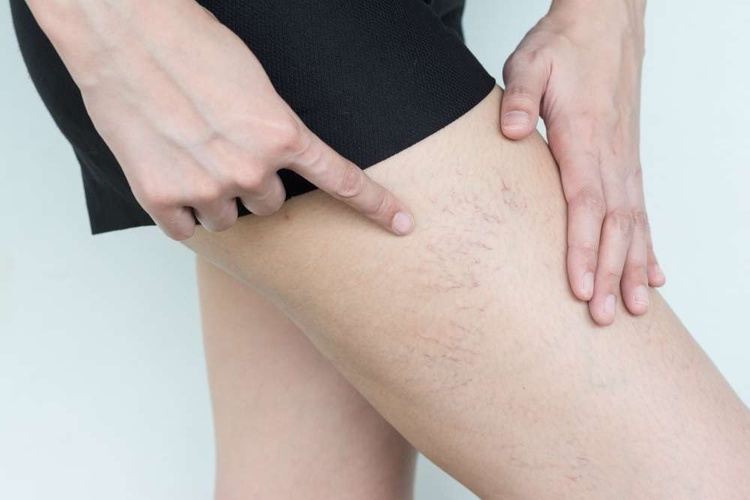Varicose Vein Treatments in the USA for 2025
In 2025, patients across the U.S. can access advanced varicose vein treatments, from minimally invasive options to surgery. Learn where to find effective, modern care to improve comfort, appearance, and overall vein health.

Reasons to Consider Varicose Vein Treatment
- Symptom Management: Many people seek treatment to relieve bothersome symptoms such as aching, pain, swelling, heaviness, and fatigue in the legs. Removing or closing off faulty veins often brings significant relief and improves daily comfort.
- Cosmetic Considerations: Varicose veins can be very noticeable and may affect one’s confidence or willingness to wear certain clothing. Treatments can improve the appearance of the legs by diminishing or eliminating prominent veins, restoring smoother skin.
- Complication Prevention: Timely intervention can prevent complications associated with chronic venous insufficiency, such as skin changes, ulcers, or more serious vascular issues. Addressing vein problems early may help individuals avoid these later-stage concerns.
Treatment Options Available in 2025
1. Radiofrequency Ablation (RFA)
Radiofrequency ablation is a minimally invasive technique that utilizes radiofrequency energy to heat and seal problematic veins from the inside. During the procedure, a thin catheter is inserted into the affected vein and heat energy is delivered, causing the vein to close. Once the target vein is sealed, blood naturally reroutes to healthier veins. RFA is performed under local anesthesia, allowing for a quick return to normal activities with minimal discomfort.
2. Endovenous Laser Ablation (EVLA)
Endovenous laser ablation involves using laser energy to achieve vein closure. A catheter delivers focused laser light into the vein, leading to the collapse and sealing of the vein wall. EVLA is particularly effective for treating larger varicose veins and is typically performed as a quick outpatient procedure under local anesthesia, minimizing downtime and recovery.
3. Varithena
Varithena is an injectable microfoam treatment administered under ultrasound guidance. This method is well-suited for veins that may not be amenable to standard catheter-based techniques. The foam irritates the vein lining, causing it to seal shut, and is especially useful for tortuous veins that are difficult to treat with other methods.
4. VenaSeal
VenaSeal is a unique option that uses a special medical adhesive to seal the affected veins. This method offers the added benefit of a rapid recovery, and patients often do not need to wear compression stockings after the procedure. The adhesive closes the vein and reroutes blood through healthier vessels.
5. ClariVein
ClariVein combines mechanical and chemical techniques by using a rotating catheter to disperse a sclerosing solution inside the vein, closing it with minimal discomfort. This minimally painful approach is attractive to patients seeking alternatives to heat-based procedures.
6. Ambulatory Phlebectomy
Ambulatory phlebectomy is a minor surgical procedure for removing visibly large or bulging veins. Small incisions are made in the skin, through which the veins are physically extracted. This method provides immediate cosmetic improvement and is performed under local anesthesia.
7. Sclerotherapy
Sclerotherapy is commonly used for smaller varicose veins and spider veins. A solution is injected directly into the affected veins, causing them to gradually close over several weeks. Multiple sessions may be needed for optimal results.
8. Compression Therapy
Compression therapy, involving the use of compression stockings, is often recommended for symptom relief. Compression helps reduce leg swelling, discomfort, and supports improved blood flow, particularly for those with mild or early-stage varicose veins.
Accessibility and Coverage
In 2025, access to quality varicose vein treatment has expanded. Patients can choose from a wide range of providers, including:
- VIP Medical Group, with offices in states such as New York and California, offering various advanced treatments administered by board-certified specialists.
- USA Vein Clinics, which operates more than 160 locations nationwide, providing minimally invasive procedures that typically take less than an hour.
- Mayo Clinic, with campuses in Arizona, Florida, and Minnesota, offering comprehensive diagnostic and therapeutic services for vein disorders.
Insurance plans frequently cover medically necessary varicose vein treatments. Many clinics offer assistance to verify insurance benefits, making these therapies more accessible and affordable for patients.
As of 2025, the USA offers a diverse array of effective varicose vein treatments, employing advanced technologies to manage symptoms, enhance appearance, and prevent complications. Consulting with a vein specialist is the best way to determine the optimal approach for your specific needs. Many clinics also help with insurance navigation, ensuring treatment is within reach for those needing care.
Sources:
Disclaimer: All content, including text, graphics, images and information, contained on or available through this web site is for general information purposes only. The information and materials contained in these pages and the terms, conditions and descriptions that appear, are subject to change without notice.




